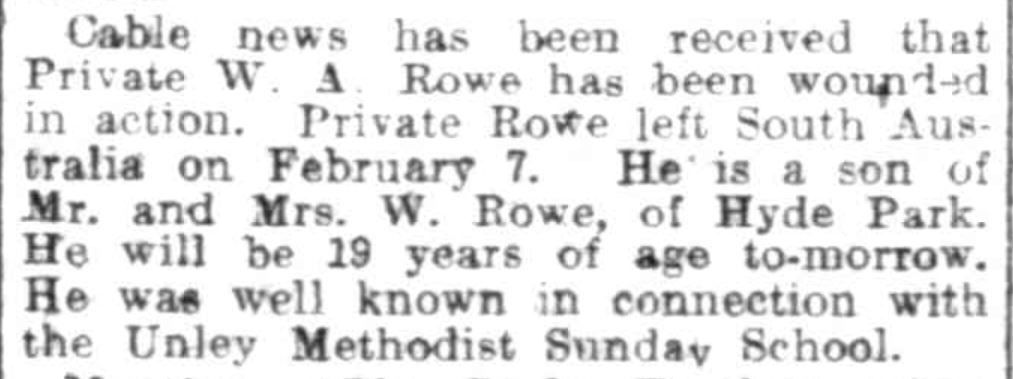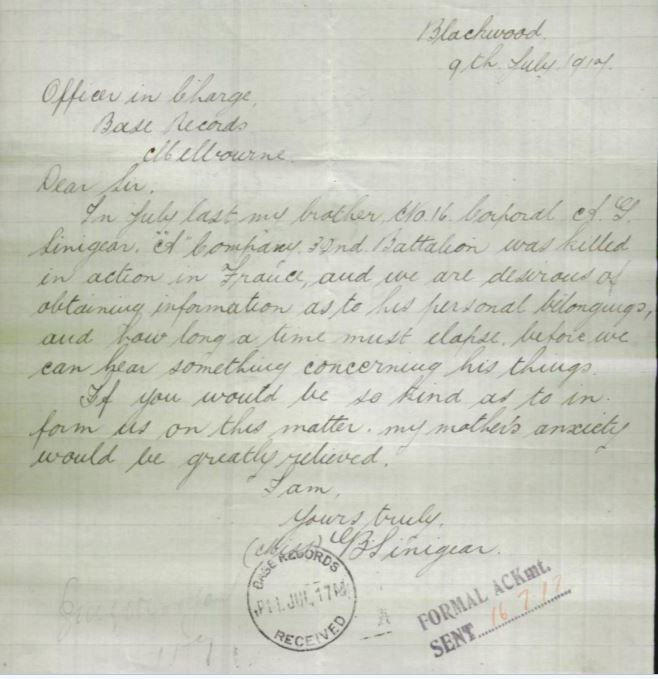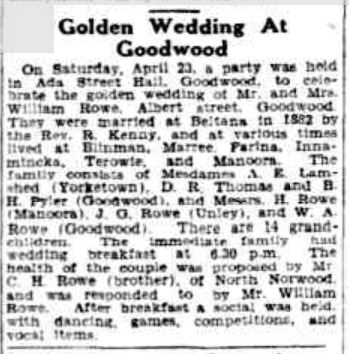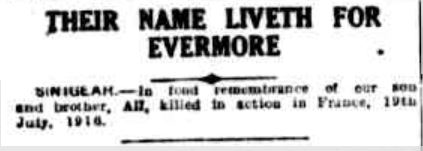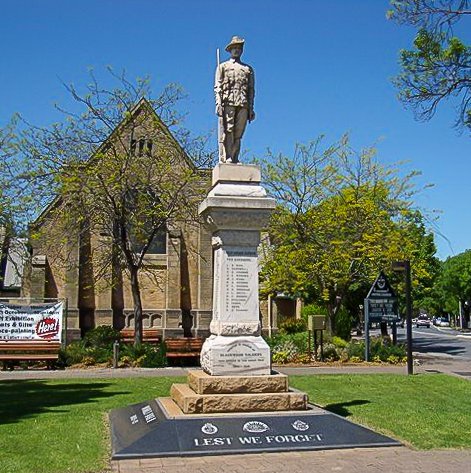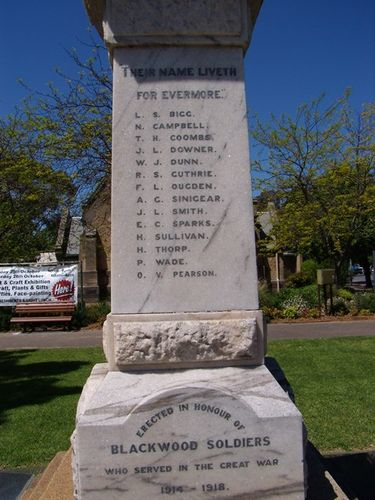Alfred George SINIGEAR
Eyes brown, Hair dark, Complexion medium
Cousins at War
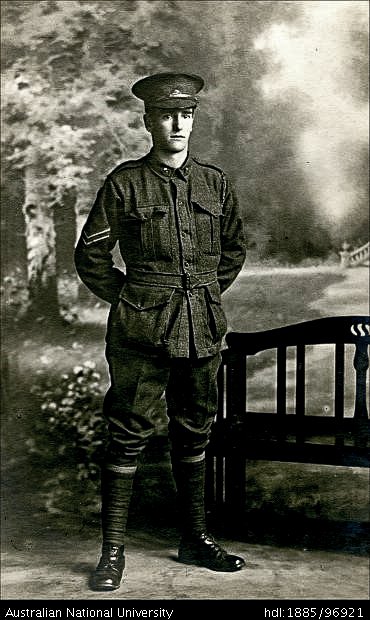
Alfred George Sinigear “Alf” was born on the 5th May 1897 in Norwood, South Australia. He was the only surviving son of Thomas and Ellen Sinigear. Thomas was a local manufacturer and Ellen was one of 21 children of Elizabeth and John Rowe. Alfred’s sister Gladys was born in 1901. The family lived in Blackwood, in the foothills of Adelaide.
Alf was a keen athlete and various articles from the time tell of his athletic prowess. Before the war he was active in the Blackwood, Belair and Coromandel Boys’ Club, including its literary society and basketball team, and he was also secretary of the Blackwood Football Club 2nd XVIII and played for the Coromandel 2nd XI cricket team.
Source: http://blackwoodsoldiersproject.blogspot.com/2010/12/lance-corporal-alfred-george-sinigear.html
From a young age he was connected with the Blackwood Methodist Sunday school. He was also a member of the choir and secretary of the Sunday afternoon men's Bible class. Alfred’s sister Gladys would often sing at church and at family occasions such as weddings.
Like many young boys of his age, Alf served 3 years in the 76th Battalion Senior Cadets, according to his army records he was granted an exemption, most likely to go to work.
William Arthur Rowe “Arthur” was born just 3 months after his cousin on 14th Aug 1897 in the outback town of Farina, 6 hours north of Adelaide to William Rowe and Elizabeth Jane Roberts. His father was a blacksmith and the family lived in various places across South Australia including Beltana, Blinman, Marree, Farina, Innamincka, Terowie and Manoora before settling in Goodwood, Adelaide. William was one of 10 known children with 6 surviving to adulthood. William was a carpenter by trade and was part of the Unley Methodist Sunday School.
Alfred at Work
After finishing school, Alf took a position as a clerk at Elder, Smith, & Co.'s office, (Elders Limited) a South Australian agricultural business. The company was proud of the patriotism of the soldiers.
Extract from PATRIOTISM AND BUSINESS. 30 August 1916.
At the annual meeting of shareholders of Messrs. Elder, Smith, & Co., on Tuesday, the Chairman of Directors (Mr. Peter Waite) prefaced his remarks in moving the adoption of the report and balance sheet with a reference to the war and the patriotism of the company's employees…. Of the company's clerical staff in London and Australia 100 men had enlisted— a magnificent example of patriotism … He regretted to have to announce that seven of those who volunteered had lost their lives in the service of their country. They were:—Messrs. Eric. Ralph. Goode, John. L. D. Gower, Guy. H. Taylor, Kenneth. Hope. Murray, Alfred. George. Sinigear, Herman. F. Hubbe, and Oswald. V.Pearson. The war was taking heavy toll of their bravest and best, and the loss of these fine young men would continue to be severely felt as years went on.

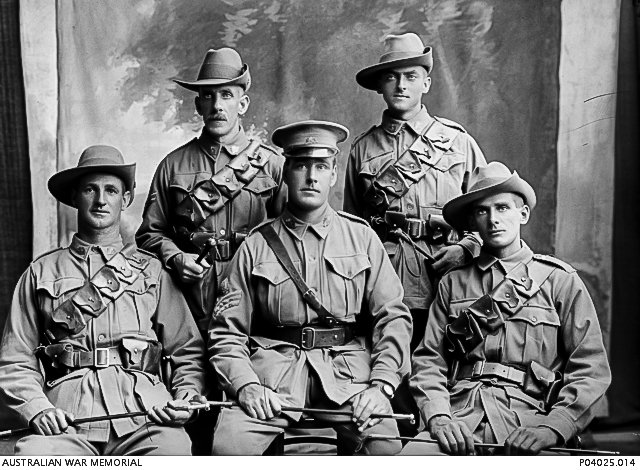
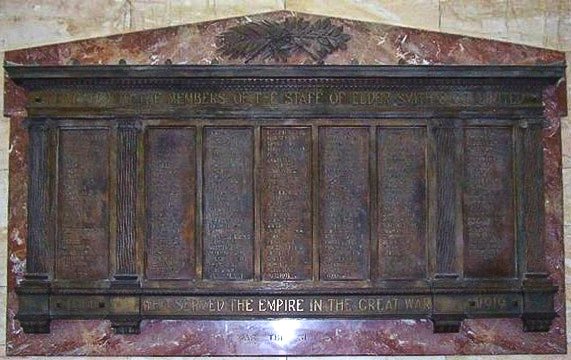
On the battlefield
Alf enlisted in Jun 1915 with the 32nd Battalion, A Company and by August 1915 was a Corporal. He was subsequently promoted to Lance Corporal. As he was underage at the time of enlistment, he required permission from his parents and his regimental number shows he was one of the first to sign up for the 32nd Battalion.
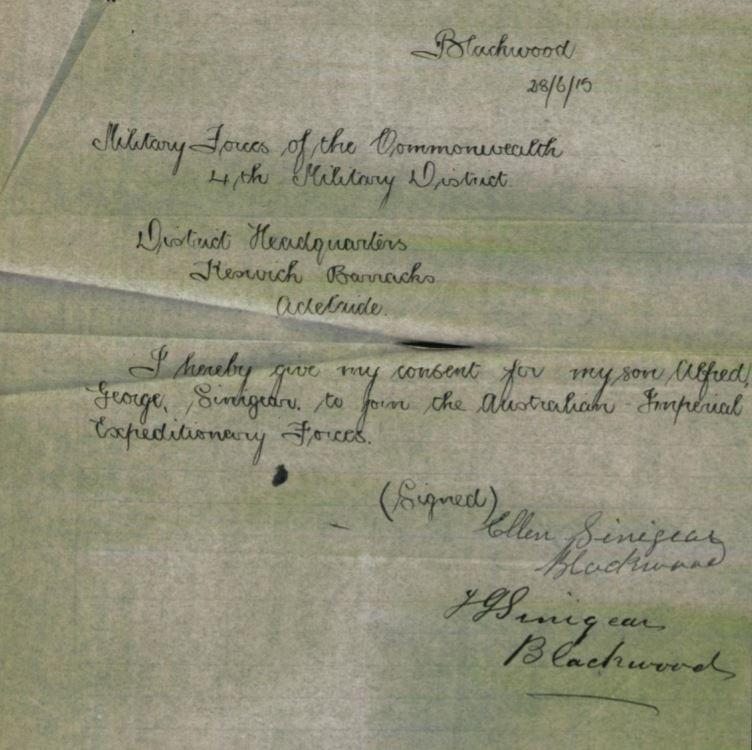

Alf embarked on the 18th November 1915 from Adelaide, South Australia on board HMAT A2 Geelong bound for Tel-el-Kebir. They then travelled to Alexandra and then onto France. Throughout 1916, Alf was in and out of hospital with Influenza and mumps, re-joining the battalion on the 20th April 1916. Alf was part of A Company of the 32nd Battalion.
William followed not long after enlisting on 14th October 1915. He departed Australia on 7 Feb 1916 from Adelaide, South Australia on board HMAT A28 Miltiades. William was in C Company and was wounded by gunshots in the forearm and bombing wounds to his thigh in action on the 20th July 1916. He was transported to England on 24th July 1916. He was transferred to Clacton on Sea Repatriation Hospital for the rest of 1916 and early 1917 and returned to Australia on 22nd February 1917.
Alf was killed in action on the 19th July 1916. His parents were notified the following week initially that he was killed in action on the 17th, but his record was subsequently amended. Few records exist for this time, and there is no sign of a Red Cross Record for Alfred or that his body was formally identified.
The 32nd Battalion fought its first major battle at Fromelles on 19 July 1916, having only entered the front-line trenches 3 days previously.
According to the War Diary for the 32nd Battalion, on the night of the 19th July 1916, Companies A and C were in the front line to form the 1st and 2nd Waves. At 5.53pm the troops were in position and moved over the parapet into No Mans land. By 6.30pm they had moved to the 1st line of the enemies defence. Little progress was made due to the lack of sandbags and that the ditch was “1 to 2 feet of mud and slush in the bottom”. Heavy bombardment from the German lines continued all night and around 4am the Germans once again attacked.
The attack was a disastrous introduction to battle for the 32nd . It suffered 718 casualties, almost 75 per cent of the battalion's total strength, but closer to 90 per cent of its actual fighting strength. Although it still spent periods in the front line, the 32nd played no major offensive role for the rest of the year.
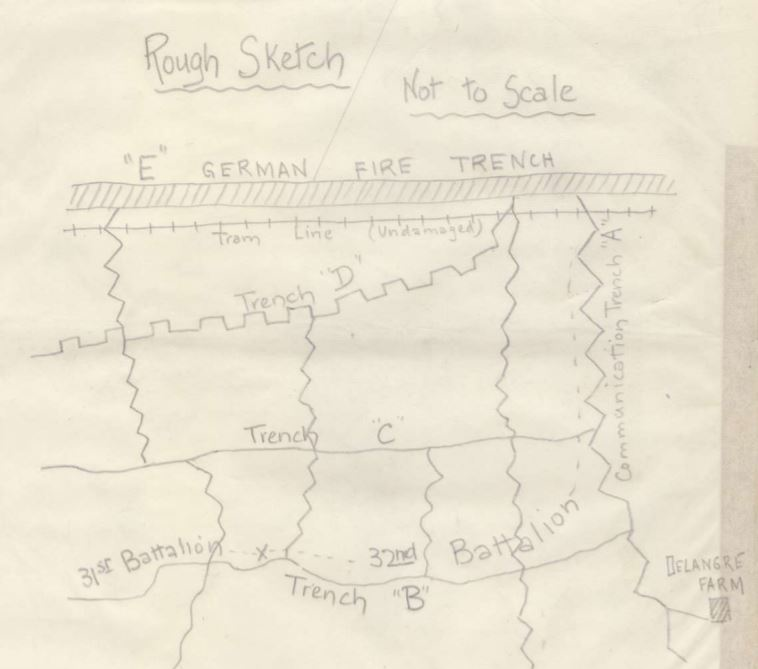
The family legacy

Family and friends of Alf were deeply saddened by the loss of Alfred, a highly esteemed member of their local community. Numerous memorial notices were posted in newspapers for many years following his death including from William and his cousins.
In 1917, Alf's sister Gladys wrote to Base records requesting more information about the whereabouts of Alf's belongings, around 1921/22 the family received a Memorial Scroll, his medals and plaque.
Tragically, Alf's father Thomas was to die 4 months after his son, leaving his mother a widow. Ellen was awarded a pension and with Gladys set up a dressmaking shop in Kensington. Later she would retire to Victor Harbour to reside with her daughter Gladys and her husband and children until her death in 1938. She took an active interest in war work and Alf was not forgotten by his family.
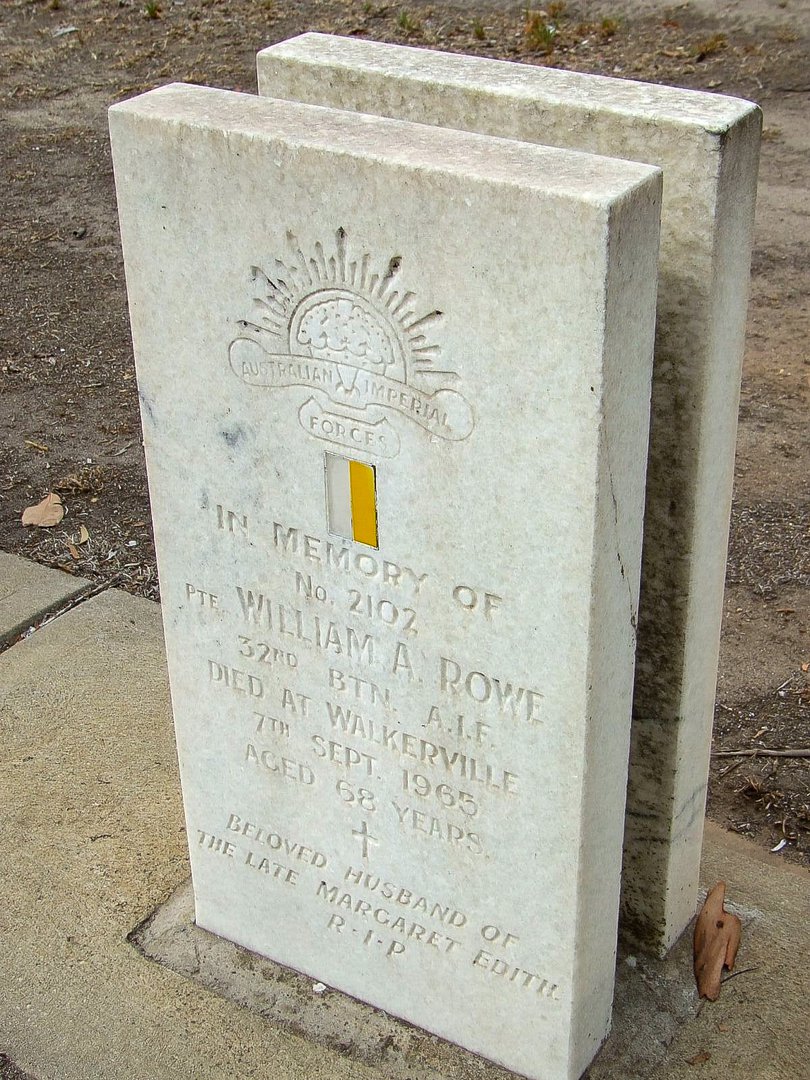
William returned to Australia and married Margaret Edith. William continued to live in Adelaide until his death in 1965, the colours of the 32nd Battalion displayed on his gravestone. He was granted a War pension upon his discharge in 1917. It is not known at this stage the extent of his injuries and the impact it had on his life, but for many returning soldiers, there was little in the way of government support initially, many relying on local volunteer patriotic societies to assist them.
Remembering Alf
Alf is commemorated in a number of places including:
- V.C. Corner (Panel No 4), Australian Cemetery, Fromelles, France
- Blackwood War Memorial
- Adelaide High School Honour Roll
- Coromandel Valley Public School Honour Roll
- Adelaide Elder Smith & Co Limited WW1 Honour Board
Somewhere in France there's a sacred spot,
'Tis a grave just newly made.
And it's sheltering our boy from perils and ills,
With which life's battle is played.
He has finished his part; we must still keep on,
Trying, like him, to be brave.
Our sacrifice is in what we have lost,
His war in what he gave.
Inserted by his loving mother and sister
For more poems, click here https://fromelles.info/news/poetry/memorials-to-alfred-sinigear/
The Fromelles Association would love to hear from you

Contacts
(Contact: carla@fromelles.info or geoffrey@fromelles.info).
(Contact: army.uwc@defence.gov.au or phone 1800 019 090).
Donations
If you are able, please contribute to the upkeep of this resource.
(Contact: bill@fromelles.info ).

